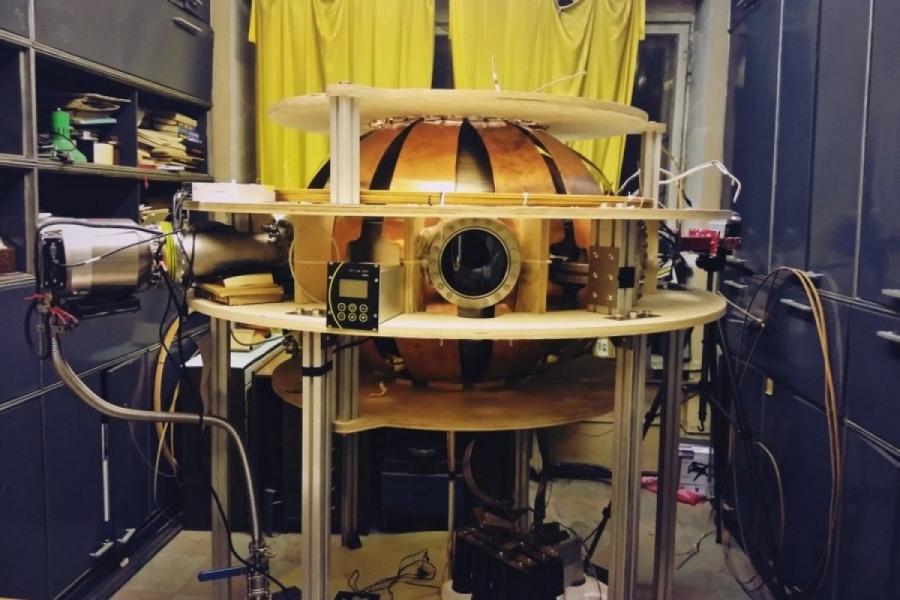MEPhI scientists have found an opportunity to reduce the radiation threat during the operation of tokamaks. Nuclear University researchers have developed a way to effectively remove tritium from tungsten layers on the inner surface of thermonuclear reactors - based on the effect of the so-called "isotope substitution". The research results have already been published in the journal Journal of Nuclear Materials (https://www.doi.org/10.1016/j.jnucmat.2022.154228).

Tokamak "MEPhIST"
During the operation of thermonuclear installations, a threat to radiation safety may arise due to the accumulation of the radioactive isotope of tritium hydrogen. So, in the international thermonuclear reactor ITER, a limiting amount of 700 g of tritium is set. There should never be more than this amount of tritium in the reactor.
As shown by studies on the world's largest tokamak JET, conducted with the participation of MEPhI employees, one of the main ways of accumulating tritium in tokamaks is the so-called "co-precipitation" - the process of simultaneous deposition on the surface of plasma-sputtered tungsten particles of the reactor walls and particles of the plasma working gas - isotopes of hydrogen.
The scientists were faced with the task of finding a method of detritization - the safe and technological removal of tritium from co-deposited layers in thermonuclear installations. Since working with tritium is very expensive and fraught with a number of dangers, in the laboratory it is often simulated using the safe heavy isotope of hydrogen - deuterium. The bet was made on the removal of deuterium from the reactor based on the so-called isotopic substitution effect, when the deuterium contained in the tungsten layer was replaced by the light hydrogen isotope protium by keeping the layer in the protium atmosphere at an elevated temperature.
“We found that at a temperature of 200°C, which is easily achievable in tokamak conditions, the efficiency of deuterium removal using isotopic substitution is at least 99%. At the same time, the efficiency of deuterium removal by simple heating in vacuum at the same temperature did not exceed 70%,” said Stepan Krat, Ph.D., Senior Researcher of the Laboratory of Physicochemical Processes in the Walls of Thermonuclear Installations and of the Department of Plasma Physics of the MEPhI.
MEPhI scientists have developed a simple physical model that describes the dynamics of isotopic substitution. Based on it, they predicted how long and at what temperature it would be necessary to withstand layers of various thicknesses in order to remove heavy hydrogen isotopes from them.
Today, researchers continue to work on the theoretical description of coprecipitation processes and study coprecipitation with other materials important for fusion, such as lithium. They expect that the results obtained will be applied in thermonuclear reactors to predict the rate of accumulation of tritium and to clean them from this isotope.





